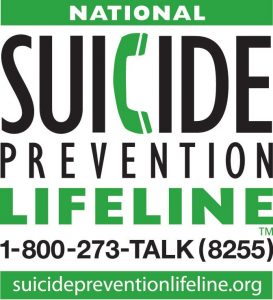Stopping Gun Violence and the Rise of Suicide

33,000 lives end by guns each year in the United States.
Two-thirds of gun deaths in the United States every year are suicides. The next-largest set of gun deaths — 1 in 5 — were young men aged 15 to 34, killed in homicides. These men were most likely to die at the hands of other young men, often related to gang loyalties or other street violence. And the last notable group of similar deaths was the 1,700 women murdered per year, usually as the result of domestic violence.
The antidote to gun violence might be to teach the ins and outs of anger management, as we are now teaching the ins and outs of algebra. We could teach what anger is, instead of teaching to deny that we have any. We could teach that there is more than one choice: bang! We could teach how to avoid taking anger provoking accusations personally.
Yet, while the murder rates in America’s cities appear to be falling, the suicide rate in America has gone up 3.7 percent in a year. A 2017 CDC report found that with little exception, larger percentages of suicides each year are committed with firearms, while methods like poisoning have increasingly fallen to the wayside. And the report makes clear that the majority of people who kill with a gun shoot themselves, not others: Suicides account for 60 percent of the country’s count of gun deaths.
Potential suicide victims, women menaced by their abusive partners and kids swept up in street vendettas are all in danger from guns, but they each require different protections. Older men, who make up the largest share of gun suicides, need better access to people who could care for them and get them help.
Women threatened by intimate partners need to be prioritized by police, who can enforce restraining orders prohibiting these men from buying and owning guns. Younger men at risk of violence need to be identified before they take a life or lose theirs and to be connected to mentors who can help them manage anger.
This last point requires no legislative action. We can begin today to give people the tools that they need to solve their anger problems and violence. The two go together ‑ when you solve one, you often solve the other. We can do more than just tell someone to, “Ignore it,” or, “Don’t take it personally.” They do not know how to “ignore it”. They do not know what “taking it personally” means. It means taking someone’s behavior as if it were a reflection on our worth as a person.
For example, if Dave says to a person on the street, “Watch where you are going, you stupid motherfu**er.” The other person could choose to remind her/himself that 1) Dave’s comments are absurd nonsense and it’s not to be taken seriously, and 2) you are smart enough as you are. You are a worthwhile human being no matter what any one else says. Even if it were true that you were not watching where you were going, which it isn’t, you would still be a worthwhile human being. If he says, “You’re an a**hole” you can remind yourself, 1) It’s only his opinion and 2) you are worthwhile no matter what anyone says.
This kind of approach gives people some insight into what is going on. It will take the power to provoke away from the antagonist and be less painful for the targets of their outbursts. It’s a power they shouldn’t have anyway. It will spare us the pain of a) feeling like an inadequate failure, b) confirming our own feelings of inferiority, and c) anger at ourselves for letting him get away with it.
On the basis of this insight, we are now in a position of responding, instead of merely reacting. We won’t have to save face by defending our honor. We can choose to do the unexpected. a) We can walk away as if nothing happened because nothing did ‑ it was only antagonism. b) We can say, “It’s awful, isn’t it?” c) We can say, “You got a real problem there.”
If we can teach people how to solve such everyday problems, they can use these encounters as a “growth opportunity”. The catch is that it takes courage to disengage. It’s scary to do something different. That’s why change is so hard. We keep reacting in the same way, knowing in advance that it won’t work, but hoping each time that it will.
We can teach our people what courage is ‑ it is the willingness to do what is hard and do it anyways. Doing what is hard is part of being an adult. Education, career, relationships, owning a home, these are all hard things to accomplish. Gold, diamonds are hard to obtain. Value comes from doing what is hard. We don’t value what is easy. We value what is difficult. So by doing the easy thing and reacting to an antagonists remarks, we feel worthless. Each time we do what is hard, we feel like an equal members of the human race ‑ no more and no less than anyone else, in spite of our faults and imperfections.
If you someone else is having thoughts about hurting themselves please contact: national suicide prevention hotline, 1-800-273-TALK (1-800-273-8255) or the crisis text line number, 741-741 (for people in the U.S.)
Tags: Anger Management, Archive
